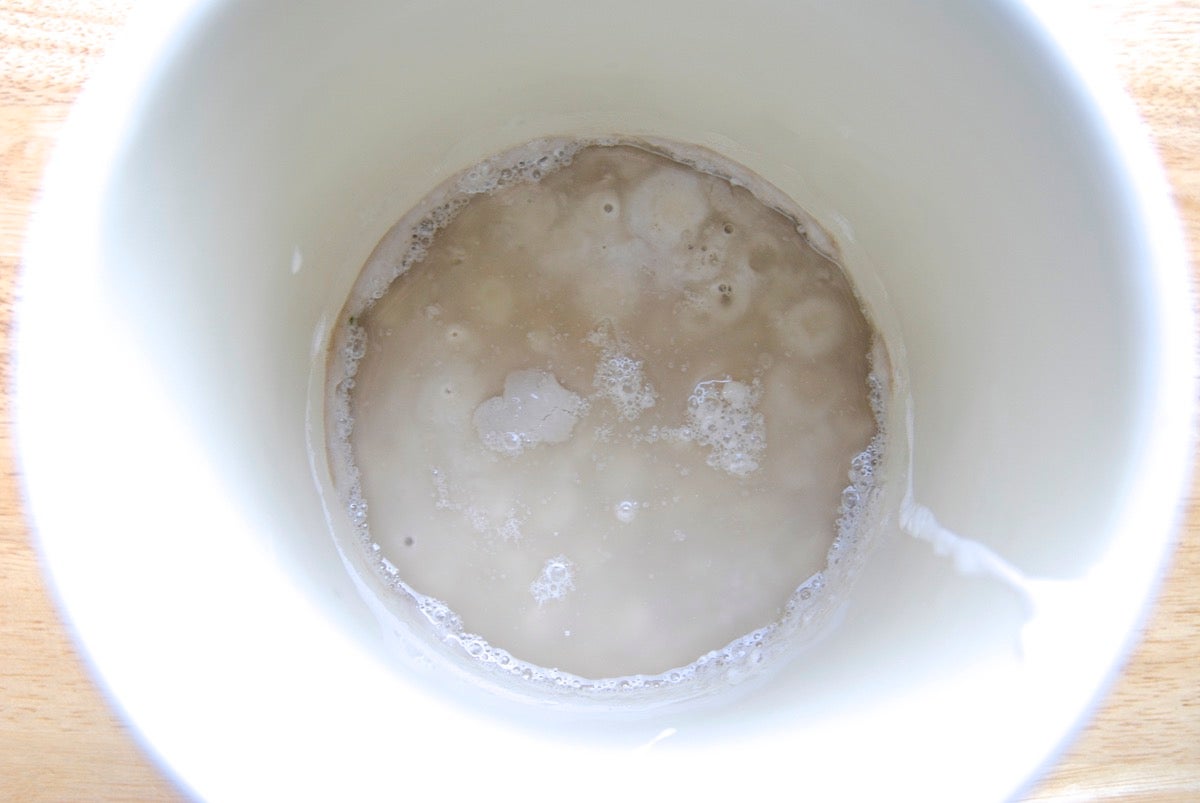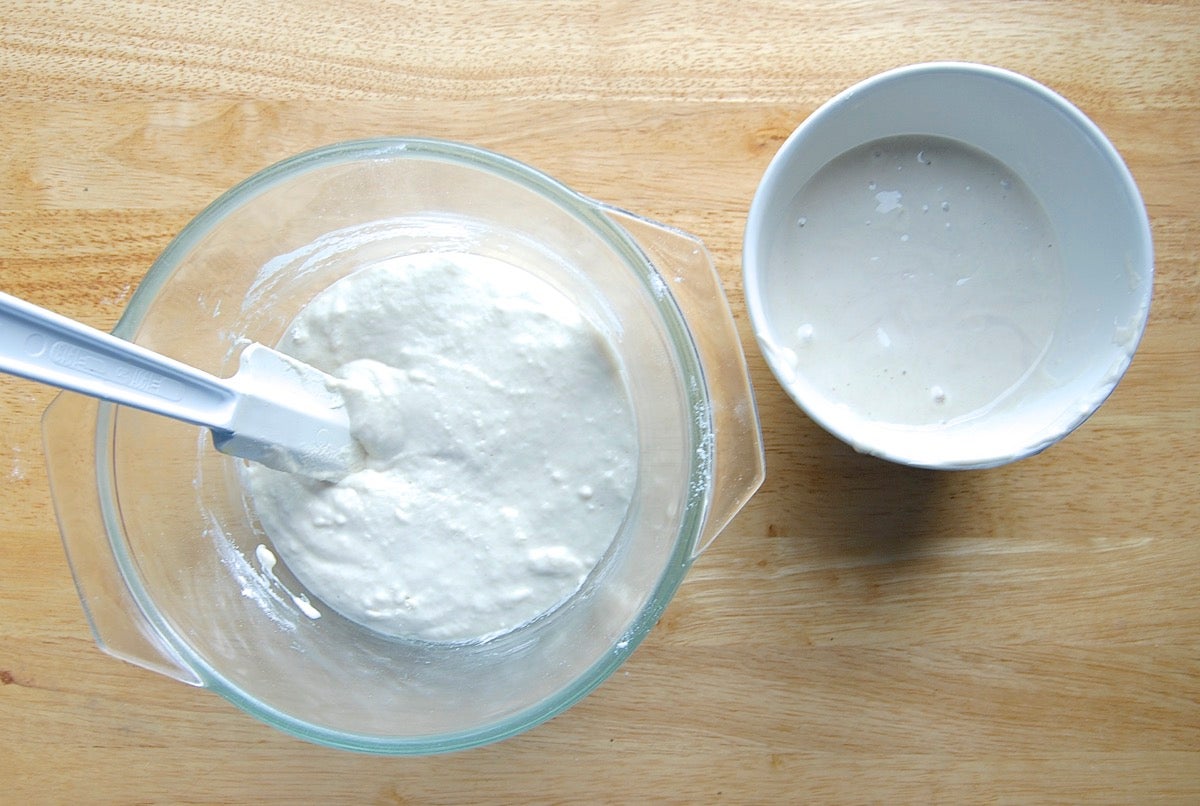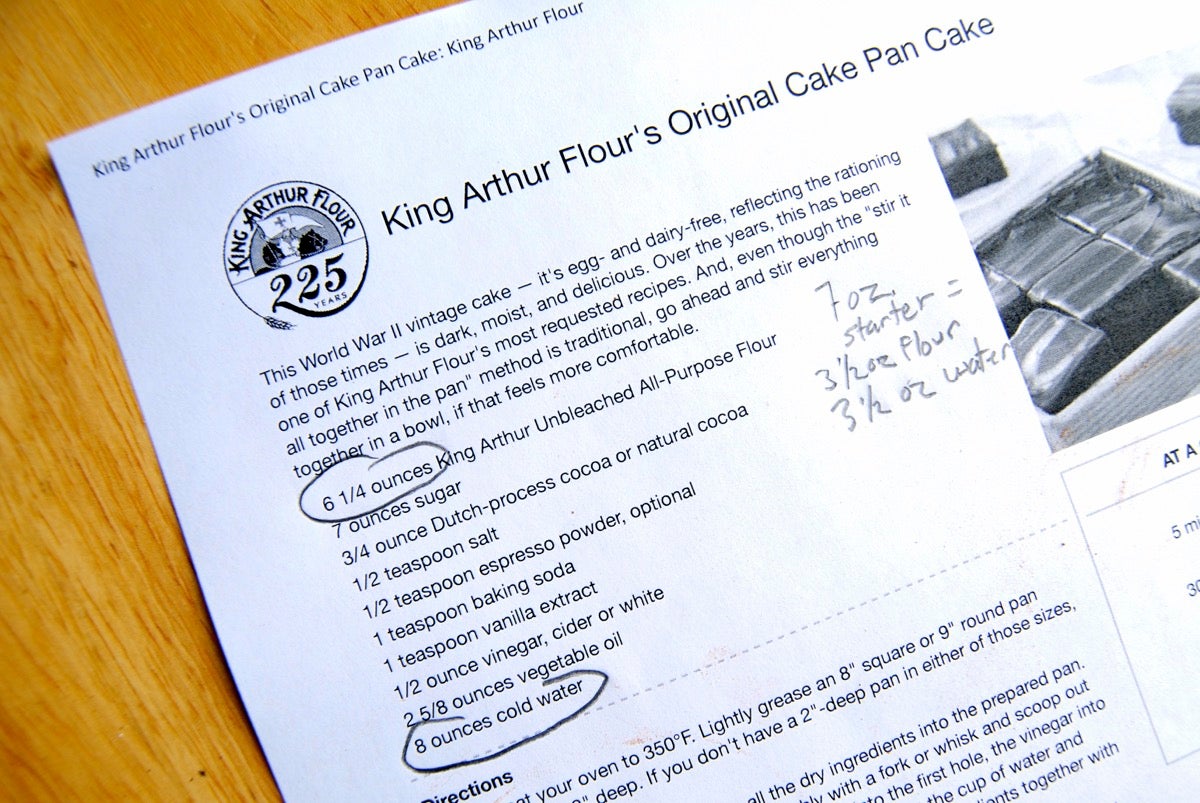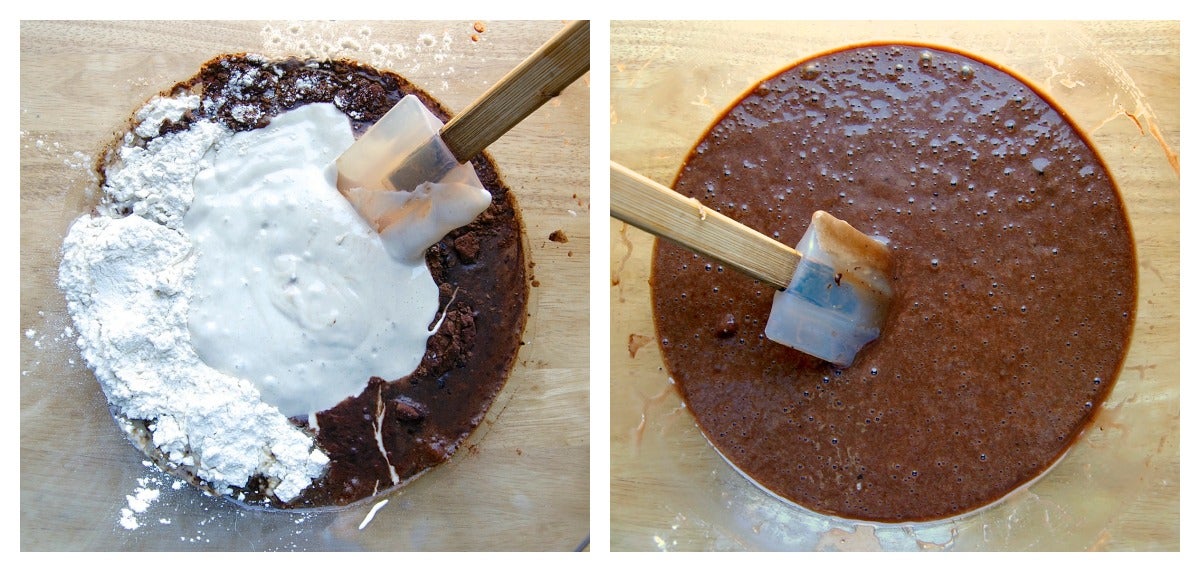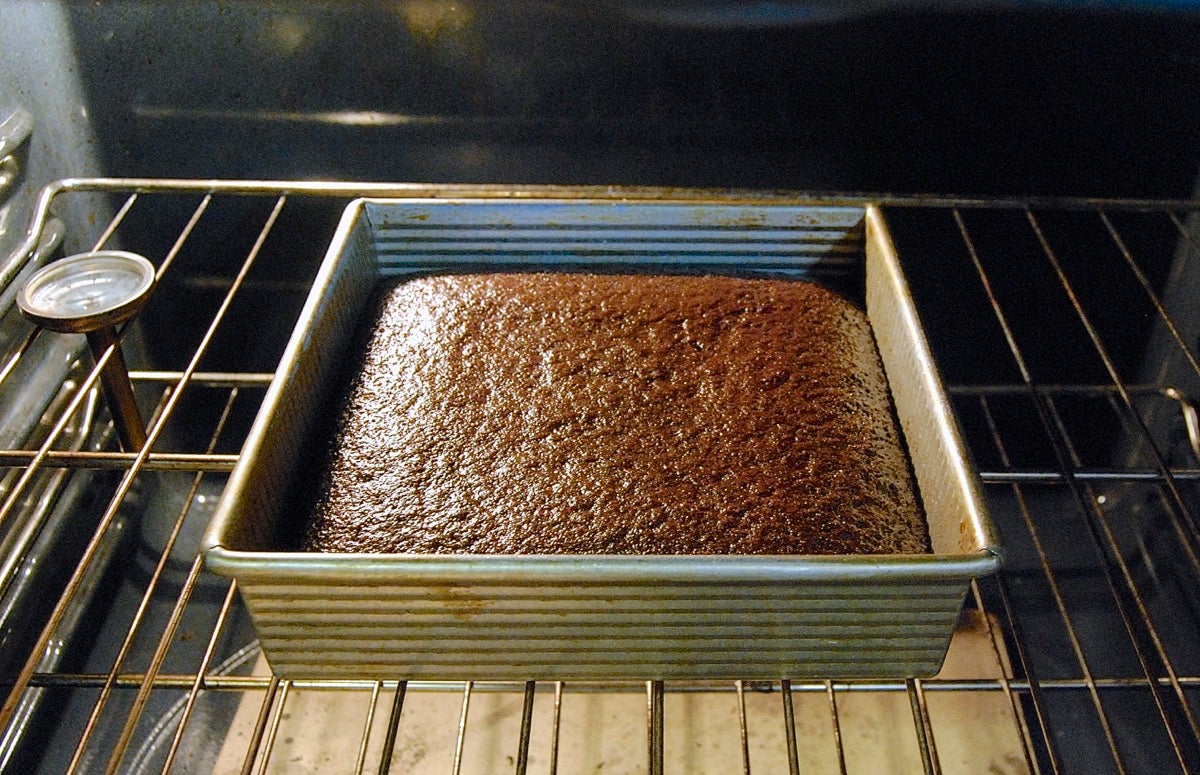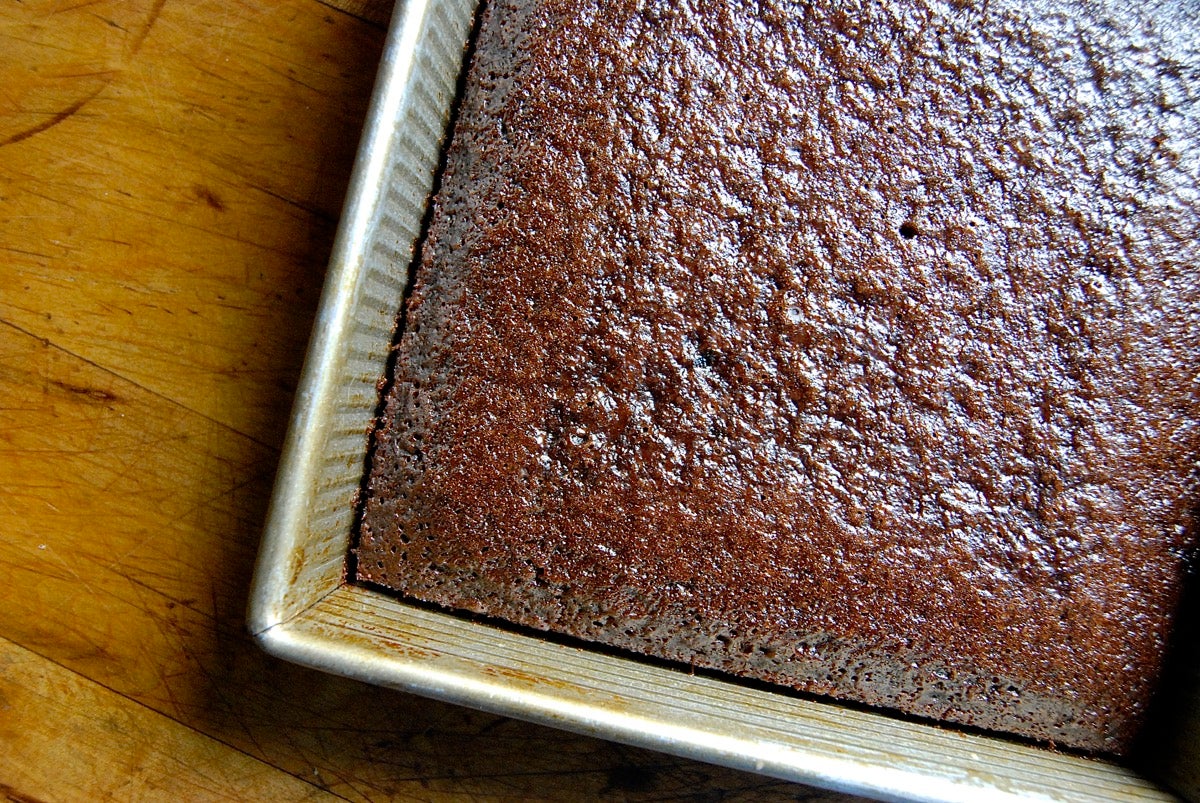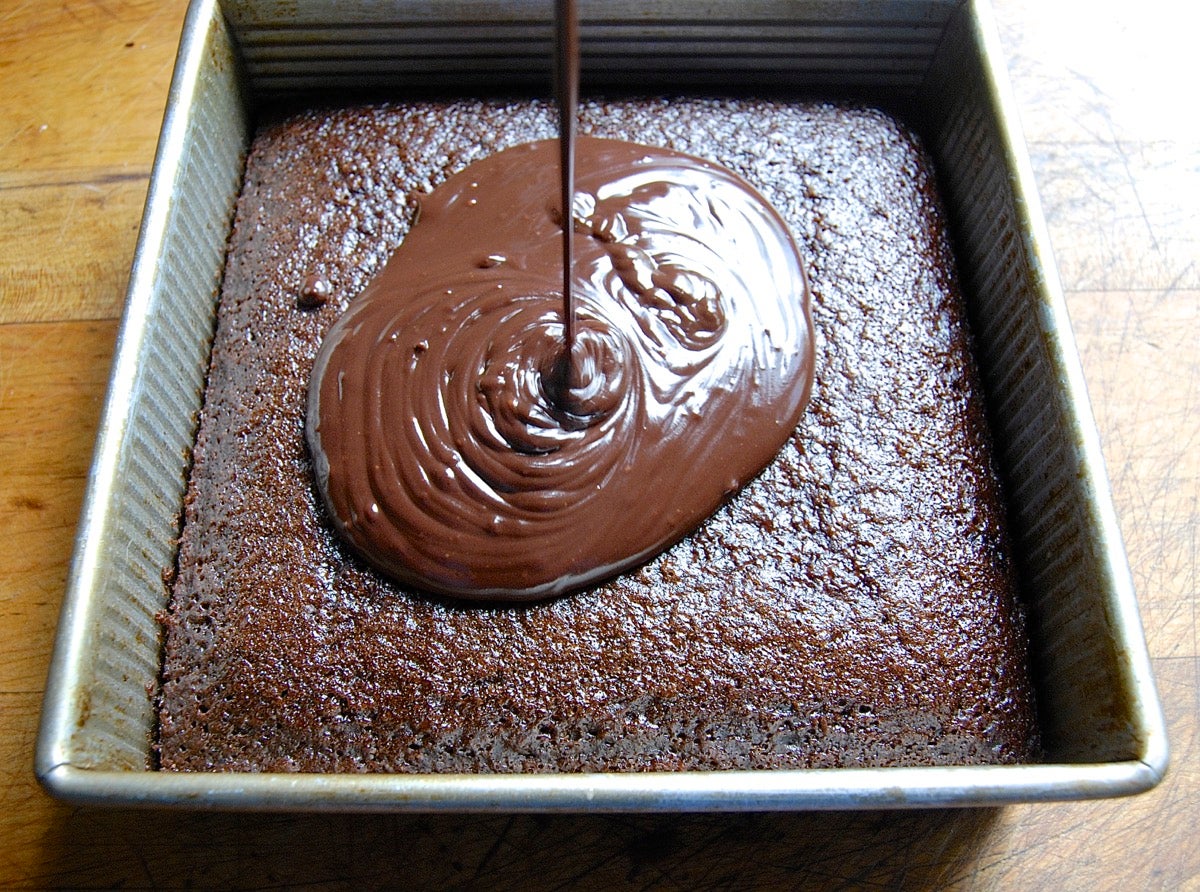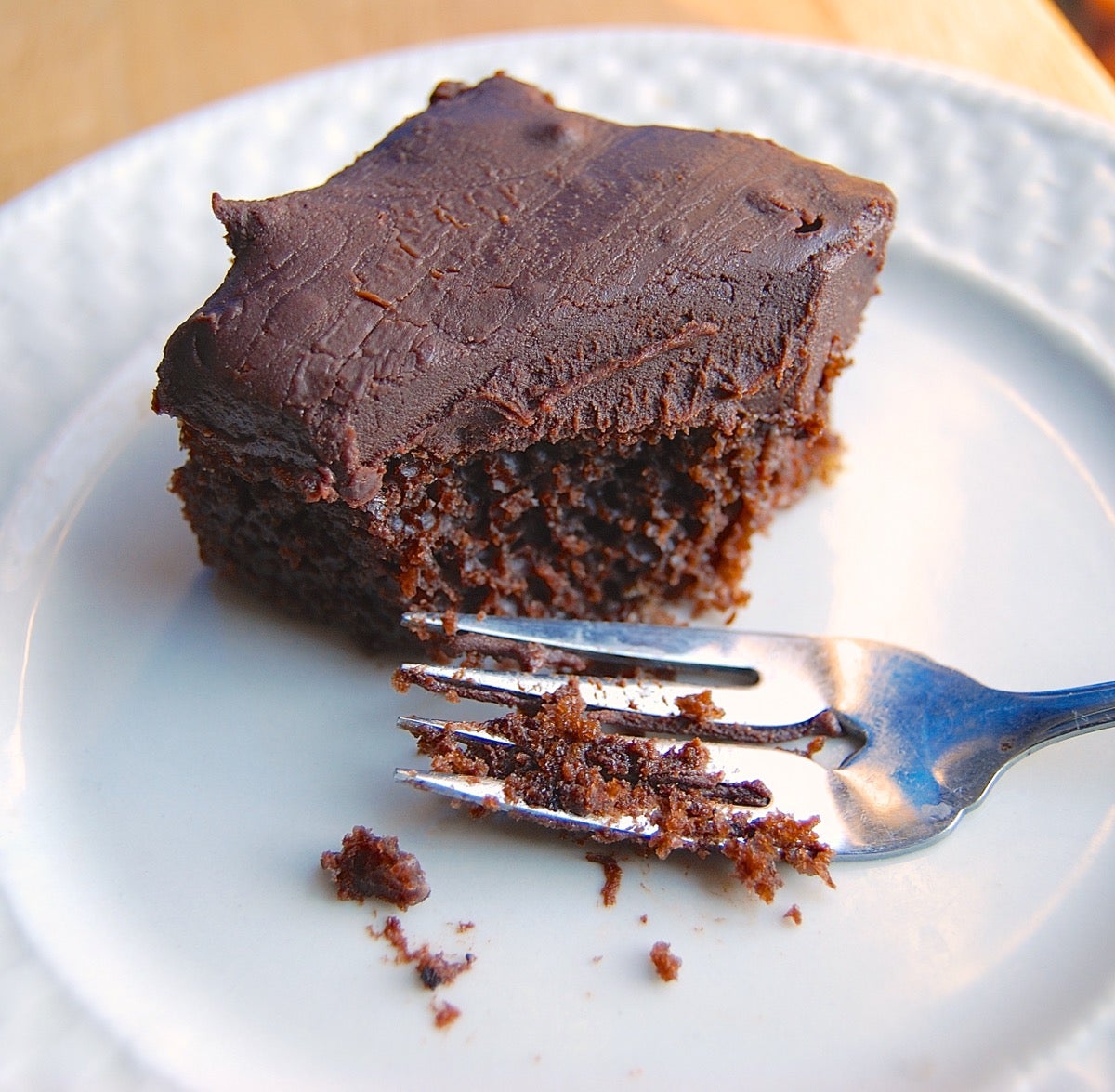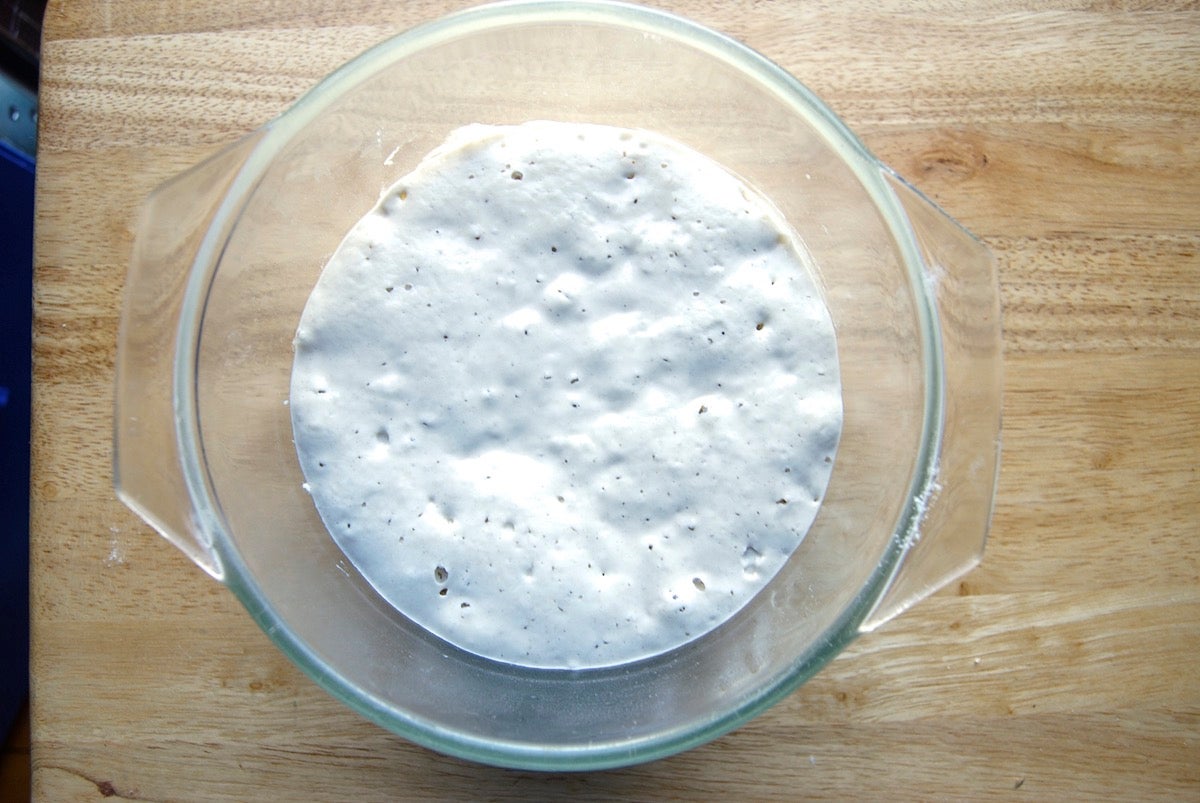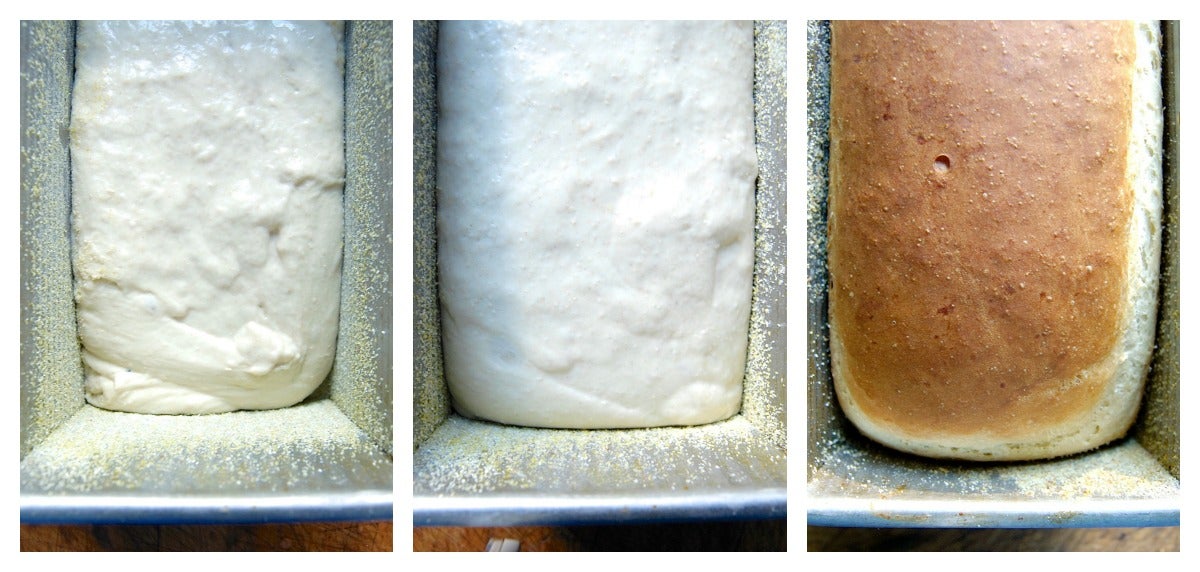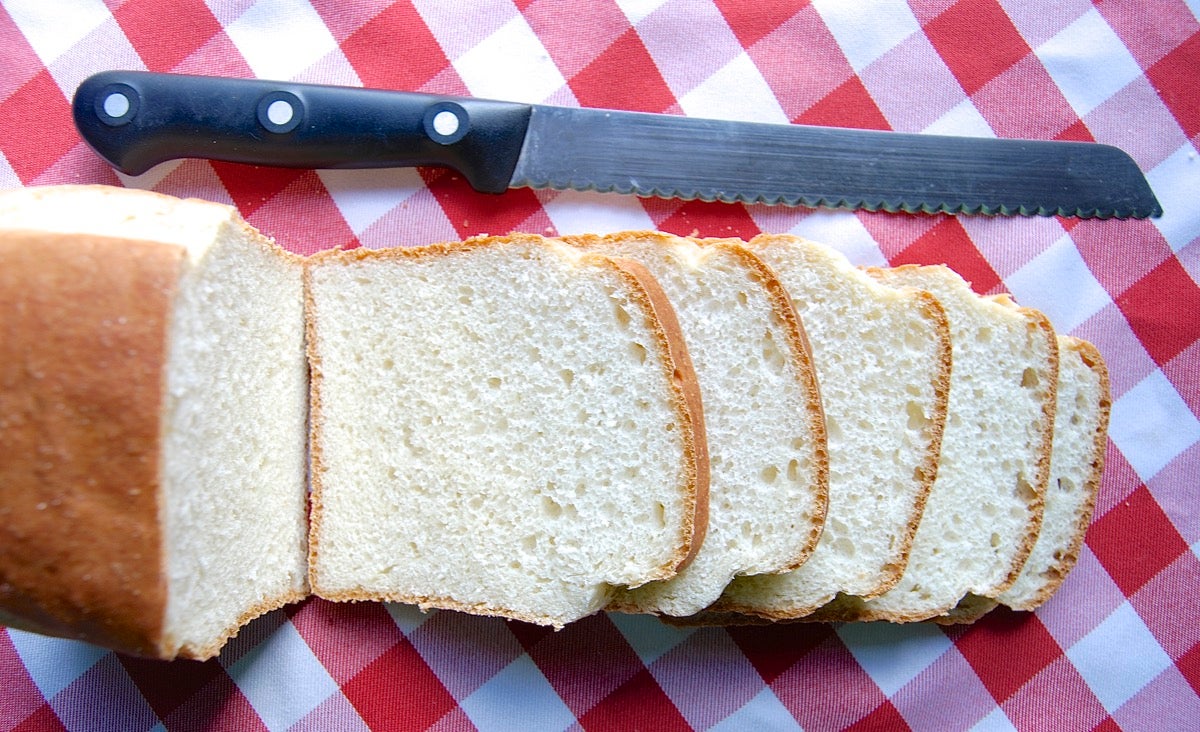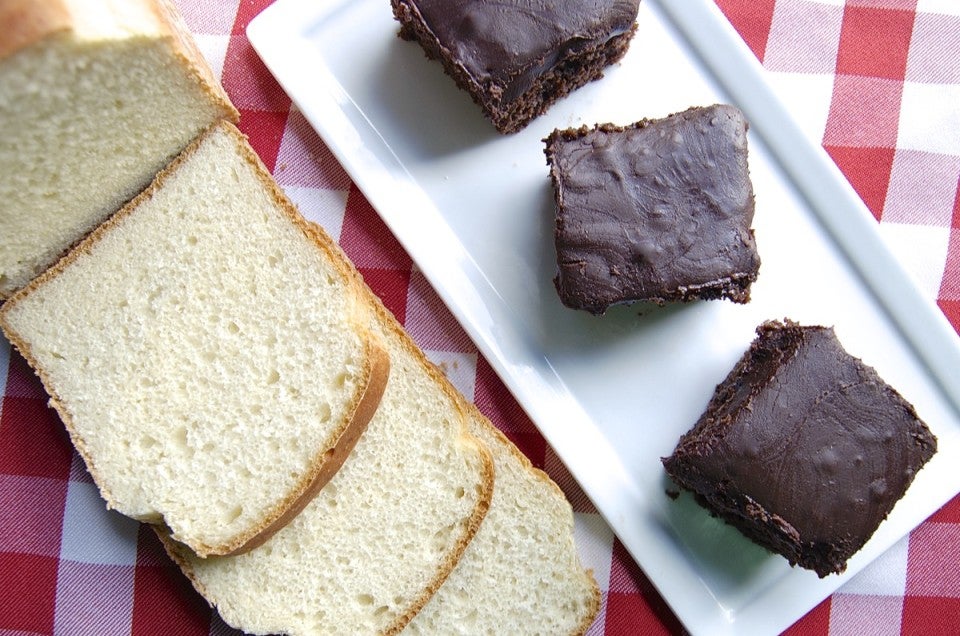


"I really hate throwing away some of my sourdough starter when I feed it. Isn't there something else I can do with it, instead of just ditching it?"
Absolutely. Adding sourdough to a recipe is simpler than you might think – so long as you choose the right recipe, and understand how to do it.
First off, let's get past the romance of sourdough starter – its history, the way it bubbles and grows, its "geographic" range of flavors – and get down to basics. Sourdough starter is equal parts (by weight) flour and water/alcohol, with a few organic acids, friendly bacteria, and yeast thrown in.
Why alcohol? Because as the starter ferments, yeast gives off tiny bits of alcohol (in addition to those flavorful organic acids).
Over the course of time, your starter will gradually become slightly more liquid, due to the addition of this alcohol. That dark liquid you see in the photo above is alcohol sitting atop a starter that hasn't been fed in a couple of weeks.
However, despite this little bit of alcohol, you can continue to think of your starter as equal parts liquid/flour, by weight.
I've just fed my starter (left); on the right is my discard, which measures a scant 1 cup (about 7 ounces).
First, you can use it in any of our online recipes calling for unfed starter.
Beyond that, think of recipes in your own repertoire using flour and water. Or flour and another liquid, like milk or coffee or juice.
And by liquid, I mean liquid that doesn't contribute additional attributes to the baked good's texture, e.g., vegetable oil, which is mainly fat; or honey, which is mainly sugar. Don't substitute sourdough starter for liquid sweeteners or liquid fats.
Let's try this unfed starter in one of my favorite cake recipes, King Arthur Flour's Original Cake Pan Cake – which happens to be our 225th anniversary Recipe of the Centuries.
The recipe calls for 6 1/4 ounces flour and 8 ounces cold water, so it's a good recipe to use.
I have 7 ounces of "discard" starter (a scant 1 cup). That's 3 1/2 ounces each water and flour.
So I'll add that 7 ounces of starter to the recipe; and reduce the amount of flour and water in the recipe by 3 1/2 ounces each: meaning in addition to the starter, I'll use 2 3/4 ounces flour and 4 1/2 ounces water.
Stay with me here; if you don't regularly bake with a scale you might feel a little foggy right now, but this is simple arithmetic.
I mix everything together. See the discard starter plopped on top?
Bake.
The edges of the cake are just barely pulling away from the sides of the pan – that means the cake is fully baked.
I pour a simple icing on top...
...and there you have it, Cake Pan Cake made with discarded sourdough starter.
Now let's try this same process in one of my favorite bread recipes, English Muffin Toasting Bread. While you can substitute unfed starter in yeast bread, I like to give my bread a little extra oomph by subbing fed starter instead.
Here's my fed starter, fully ripened and ready to go. (For you sourdough newbies, "ripened" means fed and bubbly.)
The English Muffin Toasting Bread recipe calls for 3 cups (12 3/4 ounces) flour, 1/4 cup (2 ounces) water, and 1 cup (8 ounces) milk.
I'm using 8 ounces of ripened sourdough starter. So that means I need to reduce the flour by 4 ounces (to 8 3/4 ounces); and reduce the liquid by 4 ounces by eliminating the water (2 ounces), as well as 2 ounces of the milk.
The batter looks the same as it usually does (left). It rises nicely (center). And bakes up beautifully (right).
The finished loaf slices nicely.
And the taste? It's not sour, but rather seems richer compared to my usual toasting bread. It's as though the starter simply enhances the bread's natural wheat/milk/butter flavor.
Using sourdough starter, either fed or unfed, is possible in a wide range of recipes – so long as the recipe includes sufficient water/flour for you to substitute your starter.
A cookie recipe wouldn't work well; cookie recipes generally don't include significant amounts of water or milk. But muffins, biscuits, quick breads, pancakes, scones... all of those usually include enough liquid for the substitution to work.
One thing to keep in mind: when you're substituting sourdough starter in a recipe calling for milk, you'll lose something: milk fat and milk solids, which add flavor and enhance texture. You may be willing to make the tradeoff, but it's useful to manage your expectations ahead of time.
So, now that you understand the simple process of adding sourdough to a recipe – go forth and bake! And if you'd like to skip that math, don't forget about all our recipes calling for unfed (discard) starter.


